-
A new way to detect leaks in pipes
Explosions caused by leaking gas pipes under city streets have frequently made headlines in recent years, including one that leveled an apartment building in New York this spring. But while the problem of old and failing pipes has garnered much attention, methods for addressing such failing infrastructure have lagged far behind. Typically, leaks are found using aboveground acoustic sensors, which listen for faint sounds and vibrations caused by leakage, or in-pipe detectors, which sometimes use video cameras to look for signs of pipe breaks. But all such systems are very slow, and can miss small leaks altogether. Self-propelled robotic device can speed through pipes, pinpointing leaks more accurately than existing methods.
-
-
Using cosmic rays to peer inside Fukushima Daiichi reactors
Muon radiography (also called cosmic-ray radiography) uses secondary particles generated when cosmic rays collide with upper regions of Earth’s atmosphere to create images of the objects that the particles, called muons, penetrate. The process is analogous to an X-ray image, except muons are produced naturally and do not damage the materials they contact. Los Alamos National Laboratory the other day announced an impending partnership with Toshiba Corporation to use muon tomography safely to peer inside the cores of the Fukushima Daiichi reactors and create high-resolution images of the damaged nuclear material inside without ever breaching the cores themselves. The initiative could reduce the time required to clean up the disabled complex by at least a decade and greatly reduce radiation exposure to personnel working at the plant.
-
-
ISIS insurgents take over Iraq’s largest refinery, continue advance toward Baghdad
Earlier this morning (Wednesday) ISIS Islamic militants took over Iraq’s biggest oil refinery, located near the town of Baiji, 130 miles north of Baghdad. The fall of the refinery is a major blow to the already-reeling government of Nouri al-Maliki. The refinery provides about 40 percent of Iraq’s refined oil needs, and if the supplies dry up, the Iraqi economy would be paralyzed within a few days, and Iraqi citizens would be without power or gas for their cars. As was the case since the ISIS campaign began late last week, the Iraqi military and security forces put up only a token resistance, with most of their units melting away and leaving their arms and equipment behind without even engaging the militants. Iraq is the second largest oil producer in OPEC.
-
-
Inexpensive seismic alert device may help Mexico City residents
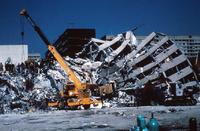
Mexico City has been experiencing an unusually large number of tremors within the past few months, and though the country has one of the most advanced seismic alert systems in the world, many residents are unable to receive notifications before tremors occur. Mexican regulations limit the sale of government-issued earthquake alert receivers to one private company, but since the receivers cost an average of $310, most families are unable to afford them. Andres Meira, a 39-year-old architect, has designed an earthquake alert receiver, which costs only $54 at retail, which taps into the government’s earthquake alert frequency to notify its users of a pending earthquake.
-
-
Texas limits release of information about toxic chemicals storage in the state
Shortly after the 2013 chemical explosion at a fertilizer plant in West, Texas, the Texas Department of State Health Services(DSHS) releasedto several media outlets its list of businesses across the state that store or handle large supplies of chemicals, including ammonium nitrate, the chemical which ignited the explosion. More recently, the department has been working to limit the release of its database of chemical inventories from the public.
-
-
Chemical pollution of European waters is worse than anticipated
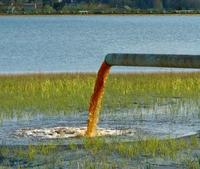
Until now environmental authorities and parts of the scientific community have considered toxic chemicals to be rather a local problem affecting only a few bodies of water. A new study, however, reveals for the first time on a large scale the ecological risks emanating from chemical toxicants for several thousands of European aquatic systems. Chemical toxicity represents an ecological threat to almost half of all European bodies of water, and in approximately 15 percent of cases, the biota in freshwater systems may even be subject to acute mortality.
-
-
Spotting sewage pipes in need of repair -- before they burst
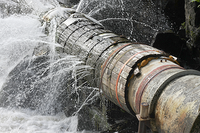
The maintenance of U.S. wastewater collection systems costs an estimated $4.5 billion every year, much of which goes toward fixing or replacing 8,000 miles of sewers. In the future, these annual costs could top $12 billion. Part of the problem is corrosion caused by sewer gases that feed acid-generating microbes, which grown in biofilms on the inside top surface of the pipes.
-
-
Turning mining wastewater into rainwater-quality water
A new cost-effective technology to treat mining wastewater and reduce sludge by up to 90 percent has been used for the first time at a commercial mine. The technology, called Virtual Curtain, was used to remove metal contaminants from wastewater at a Queensland mine and the equivalent of around twenty Olympic swimming pools of rainwater-quality water was safely discharged.
-
-
Number of structurally deficient bridges in U.S. declines
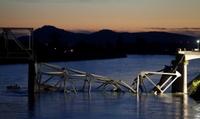
The number of structurally deficient bridges in the United States has declined by 14 percent in the last six years, but despite the improvement, 10 percent of American bridges are in need of maintenance, rehabilitation, or replacement. The average age of bridges in the country is forty-three years old, and most bridges were built to last for fifty-years, so eventually all bridges will become structurally deficient unless they are repaired or replaced.
-
-
Urban man-made drainage may increase risk of flooding
Installing drainage systems in developing towns and cities can cause water to reach rivers more quickly, potentially raising the risk of flooding, say scientists. They suggest that, in some cases, storm drains may do more to increase the risk of flooding than changes in the land surface.
-
-
Towns in northeast U.S. develop adaptation strategies for climate change
In many northeastern towns along the coast of the United States, local officials are attempting to identify and predict the effects of climate change which will occur over the next few decades. “You’re going to feel impacts. It’s a global issue with local effects…We don’t know exactly what’s coming, so let’s plan to be adaptable,” says a leader of a regional climate adaptation project.
-
-
Could devastating floods help Bosnians heal their war wounds?
The violent breakup of Yugoslavia in the 1990s and the subsequent war in Bosnia between 1992 and 1995 took the lives of more than 100,000 Bosnians and left two million homeless. Two decades later those survivors have been forced once again to abandon their homes — this time by floodwaters rather than bullets. The heaviest rainfalls ever recorded in the Balkans have led to catastrophic flooding in Bosnia and Herzegovina. Swelled by weeks of rain, the devastating floodwaters swamped more than 60 percent of the country last month, destroying more than 100,000 homes and displacing around 950,000 citizens. The floods also damaged vital infrastructure, destroyed industrial assets, and killed livestock. It is difficult to find a ray of light in this grim story of disaster, except this: Over the past weeks, media outlets have been flooded with stories and images of bravery, camaraderie, and community spirit where ethnicity suddenly became irrelevant. It remains to be seen how this feeling of camaraderie and community can be harvested to mobilize the people of Bosnia ahead of the general elections in October. Such a movement would have the potential to force corrupted political elites into the corner by draining them of their political capital.
-
-
Smart infrastructure sensors are powered by the pavement, bridges they monitor

As states look to improve its infrastructure — roads and bridges — researchers think they may have one solution. They are creating smart infrastructure sensors that are powered by the pavement and bridges they are designed to monitor. These small sensors will self-diagnose damage and mechanical failure in pavements and bridges.
-
-
Carbon-cutting regulations may boost prospects of nuclear power plants
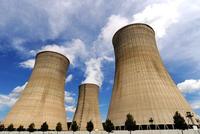
In a report issued last Thursday, Standard & Poor’s Ratings Services (S&P) predicted that new nuclear plant construction could benefit from the Environmental Protection Agency’s (EPA) recent carbon-cutting guidelines for current natural gas power plants.
-
-
IT security at U.S. ports weak: GAO
The Government Accountability Office (GAO) reports that maritime security policies and plans at three high-risk U.S. ports do not effectively address how to assess, manage, and respond to cybersecurity threats. While all three ports have strategies to deal with physical security, there were few policies that specifically addressed cybersecurity.
-
More headlines
The long view
Helping Strengthen America’s Critical Infrastructure
Everyday life depends on a robust infrastructure network that provides access to running water, communications technology and electricity, among other basic necessities. The experts who keep our national infrastructure secure and resilient also need a strong network to share their knowledge and train the next generation of professionals capable of solving complex infrastructure challenges.
AI and the Future of the U.S. Electric Grid
Despite its age, the U.S. electric grid remains one of the great workhorses of modern life. Whether it can maintain that performance over the next few years may determine how well the U.S. competes in an AI-driven world.
Using Liquid Air for Grid-Scale Energy Storage
New research finds liquid air energy storage could be the lowest-cost option for ensuring a continuous power supply on a future grid dominated by carbon-free but intermittent sources of electricity.
Enhanced Geothermal Systems: A Promising Source of Round-the-Clock Energy
With its capacity to provide 24/7 power, many are warming up to the prospect of geothermal energy. Scientists are currently working to advance human-made reservoirs in Earth’s deep subsurface to stimulate the activity that exists within natural geothermal systems.
Experts Discuss Geothermal Potential
Geothermal energy harnesses the heat from within Earth—the term comes from the Greek words geo (earth) and therme (heat). It is an energy source that has the potential to power all our energy needs for billions of years.
